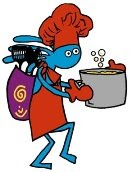Thanksgiving is a day when many Americans gather together with family
for an afternoon of food and football, but just how far do people travel
to spend turkey day at Grandma's house? Which state grows the most
cranberries, and how big was the world's largest pumpkin pie? Discover
the answer to these questions, as well as many more facts about popular
Thanksgiving foods and traditions.
Over the Years
Though many competing claims exist, the most familiar story of the first Thanksgiving took place in Plymouth Colony, in present-day Massachusetts, in 1621. More than 200 years later, President Abraham Lincoln declared the final Thursday in November as a national day of thanksgiving. Congress finally made Thanksgiving Day an official national holiday in 1941.
Sarah Josepha Hale, the enormously influential magazine editor and author who waged a tireless campaign to make Thanksgiving a national holiday in the mid-19th century, was also the author of the classic nursery rhyme "Mary Had a Little Lamb."
In 2001, the U.S. Postal Service issued a commemorative Thanksgiving stamp. Designed by the artist Margaret Cusack in a style resembling traditional folk-art needlework, it depicted a cornucopia overflowing with fruits and vegetables, under the phrase "We Give Thanks."
On the Roads
The American Automobile Association (AAA) estimated that 38.4 million Americans traveled 50 miles or more from home over the Thanksgiving holiday weekend in 2009.
In 2008, Thanksgiving travel dropped a precipitous 25.2 percent in the wake of the crisis in the housing and financial markets. AAA attributed the subsequent increase in travel to improved consumer confidence, better financial market performance and a growing sense among many consumers that the worst of the global economic crisis is over.
On the Table
According to the U.S. Census Bureau, Minnesota is the top turkey-producing state in America, with a planned production total of 45.5 million in 2009. Just six states—Minnesota, North Carolina, Missouri, Virginia, and California—will probably produce two-thirds of the estimated 2750 million birds that will be raised in the U.S. this year.
The National Turkey Federation estimated that 46 million turkeys—one fifth of the annual total of 235 million consumed in the United States in 2007—were eaten at Thanksgiving.
In a survey conducted by the National Turkey Federation, nearly 88 percent of Americans said they eat turkey at Thanksgiving. The average weight of turkeys purchased for Thanksgiving is 15 pounds, which means some 690 million pounds of turkey were consumed in the U.S. during Thanksgiving in 2007.
Cranberry production in the U.S. was approximately 709 million pounds in 2009. Wisconsin, Massachusetts, New Jersey, Oregon and Washington are the top cranberry growing states.
Illinois, California, Pennsylvania and New York are the major pumpkin growing states, together they produced 1.1 billion pounds of pumpkin in 2008, with a combined value of $141 million.
The sweet potato is most plentifully produced in North Carolina, which grew 874 million pounds of the popular Thanksgiving side dish vegetable in 2008. Other sweet potato powerhouses included California and Mississippi which produced 437 million pounds and 335 million pounds, respectively.
According to the Guinness Book of World Records, the largest pumpkin pie ever baked weighed 2,020 pounds and measured just over 12 feet long. It was baked on October 8, 2005 by the New Bremen Giant Pumpkin Growers in Ohio, and included 900 pounds of pumpkin, 62 gallons of evaporated milk, 155 dozen eggs, 300 pounds of sugar, 3.5 pounds of salt, 7 pounds of cinnamon, 2 pounds of pumpkin spice and 250 pounds of crust.
Around the Country
Three towns in the U.S. take their name from the traditional Thanksgiving bird, including Turkey, Texas (pop. 465); Turkey Creek, Louisiana (pop. 363); and Turkey, North Carolina (pop. 270).
Originally known as Macy's Christmas Parade—to signify the launch of the Christmas shopping season—the first Macy's Thanksgiving Day Parade took place in New York City in 1924. It was launched by Macy's employees and featured animals from the Central Park Zoo. Today, some 3 million people attend the annual parade and another 44 million watch it on television.
Tony Sarg, a children's book illustrator and puppeteer, designed the first giant hot air balloons for the Macy's Thanksgiving Day Parade in 1927. He later created the elaborate mechanically animated window displays that grace the façade of the New York store from Thanksgiving to Christmas.
Snoopy has appeared as a giant balloon in the Macy's Thanksgiving Day Parade more times than any other character in history. As the Flying Ace, Snoopy made his sixth appearance in the 2006 parade.
The first time the Detroit Lions played football on Thanksgiving Day was in 1934, when they hosted the Chicago Bears at the University of Detroit stadium, in front of 26,000 fans. The NBC radio network broadcast the game on 94 stations across the country--the first national Thanksgiving football broadcast. Since that time, the Lions have played a game every Thanksgiving (except between 1939 and 1944); in 1956, fans watched the game on television for the first time. (Source:
The History Channel website. Retrieved November 2, 2011)
